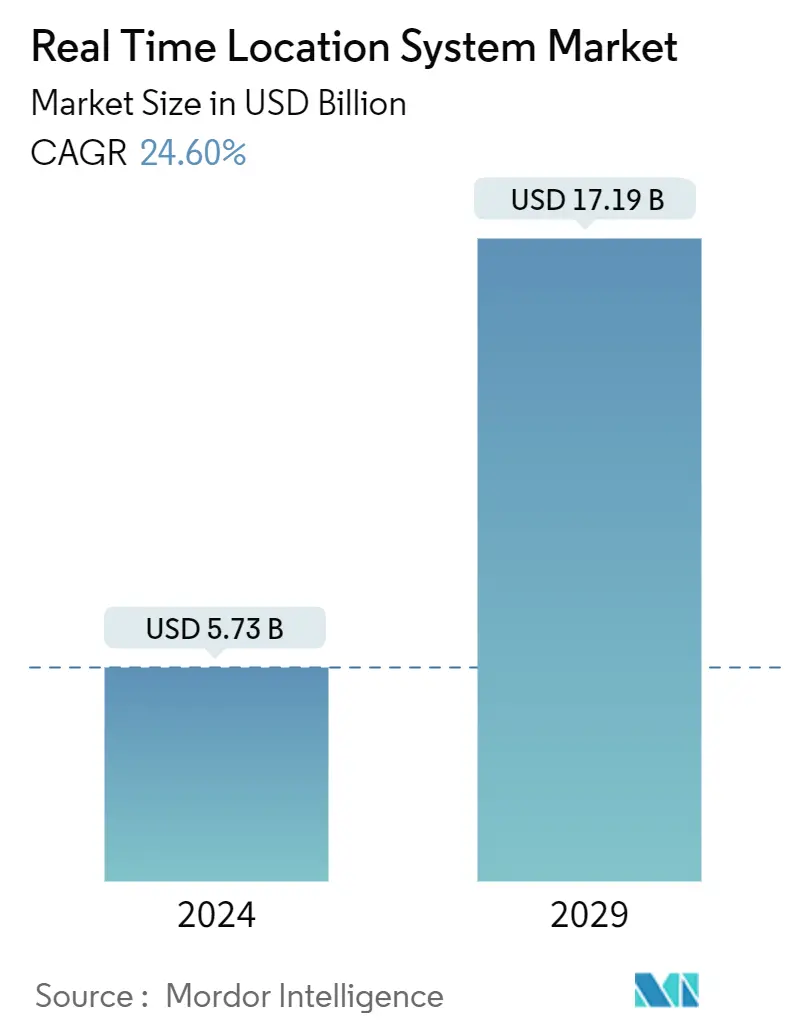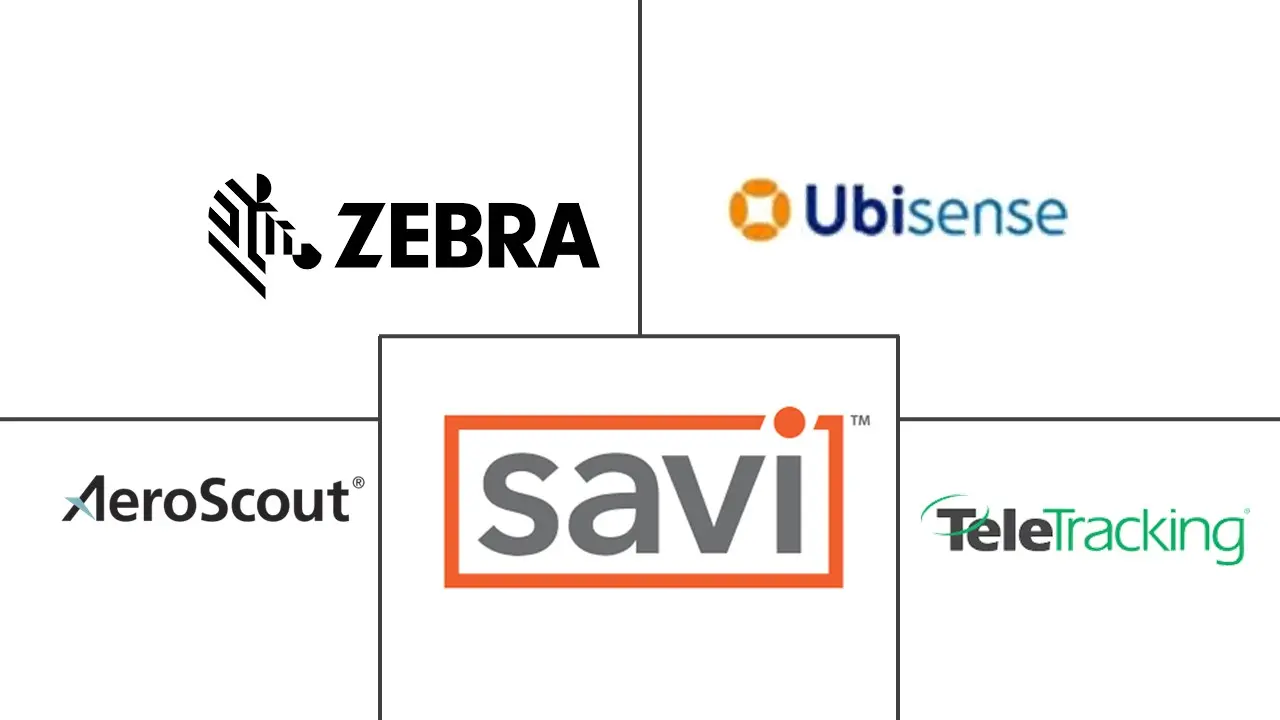Market Size of Real Time Location System Industry

| Study Period | 2019 - 2029 |
| Market Size (2024) | USD 5.73 Billion |
| Market Size (2029) | USD 17.19 Billion |
| CAGR (2024 - 2029) | 24.60 % |
| Fastest Growing Market | Asia Pacific |
| Largest Market | North America |
Major Players
*Disclaimer: Major Players sorted in no particular order |
Need a report that reflects how COVID-19 has impacted this market and its growth?
Real Time Location System Market Analysis
The Real Time Location System Market size is estimated at USD 5.73 billion in 2024, and is expected to reach USD 17.19 billion by 2029, growing at a CAGR of 24.60% during the forecast period (2024-2029).
A real-time location system helps determine the current position of an object based on real-time information gathered through a wireless system. It helps in indoor tracking of the thing as well. Therefore, owing to the availability of indoor tracking, the healthcare sector is adopting this system, which is expected to contribute to the growth of the RTLS market for the healthcare vertical.
- For instance, according to Cisco, 500 billion devices are expected to be connected to the Internet by 2030. With the increasing trend of IoT and wearable devices, organizations can quickly get more things done, boosting productivity and delivering insight for better user experiences and engagement.
- Industries are opting for RTLS to lower the risk of workplace accidents. An RTLS helps to know the exact position of forklifts, vehicles, and operators at any given time. Based on the collected data, an RTLS analyzes the traffic, enabling it to identify and eliminate workplace accidents and eradicate workflow bottlenecks, saving time and money.
- RTLS can also be an effective way for hospitals to monitor their operations as insurance against potential lawsuits. Most hospitals have patient promises (for instance, how often staff checks up on patients and how often they receive medical attention). These are particularly common in patients with critical conditions or various mental illnesses. RTLS can be used as insurance against such lawsuits.
- The Bluetooth standard has been widely adopted worldwide. Bluetooth Low-Energy (BLE) solutions are cheaper and easier to integrate with existing systems and devices than other technologies. RTLS employing Bluetooth tags offers a detection accuracy of up to 1.5 meters (approximately 5 feet), making them suitable for diverse healthcare applications. High initial setup and maintenance costs are likely to hinder the market's growth during the forecast period.
- Owing to the outbreak of COVID-19, hospitals have been leveraging RFID technology to better manage patients and employees during the pandemic. RFID tools that use wireless communication to identify and track assets and equipment have witnessed a strong adoption in the healthcare sector. As public health emergencies continue, RFID drives care teams' efficiency and accountability.
